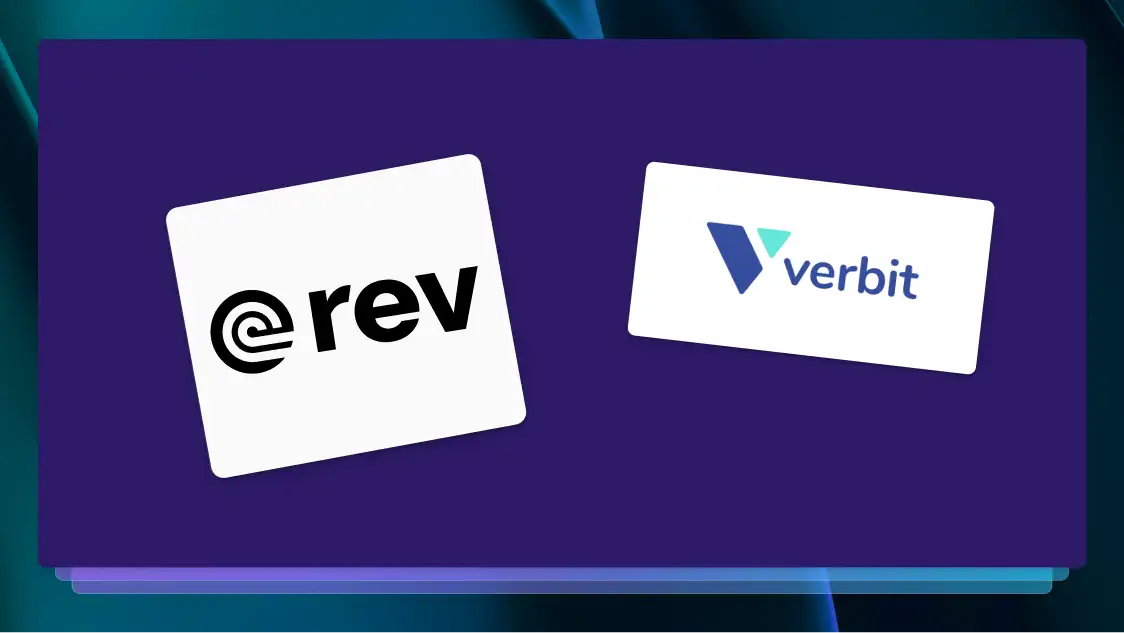Build Speech-To-Text API Into Your Applications: Easy How to Guide
A speech-to-text API lets you integrate an ASR engine into your application with direct, automated access to transcription services.

What is a Speech-to-Text API?
Speech-to-text APIs let you integrate speech-to-text into your application. This gives you direct, automated access to transcription and captioning services. Such APIs enable new use cases for pre-recorded audio data and real-time transcription.
AI vs Human Transcription and Captioning
AI transcription accuracy has come a long way. We can now achieve rates above 80% or even in the low 90s in some cases. Yet, it still can’t match the 99% or better accuracy rate possible with human transcribers.
Accuracy is not the only important factor in captioning and transcription services. Speech-to-text AI shines in cases where speed and cost matter more than accuracy. If accuracy is more important, though, human transcription is still the better option. This is often the case in legal and medical use cases.
Building With a Speech-to-Text API
Using a speech-to-text API makes implementation easy. You just need to add API calls to your application using a software development kit (SDKs). After deployment, you will then be able to send a range of supported audio file types to the API.
Depending on your needs, you will want to pick one or both of our APIs:
- An asynchronous API that is perfect for pre-recorded audio and video files. It offers transcription or captioning of hour-long files in under a minute.
- A streaming API built to support:
- Real-time captioning of live audio and video events
- Keyword monitoring
- Implementing actions based on specified trigger words.
Let’s take a look at some common use cases for these APIs.
How Call Centers Can Use Speech-to-Text APIs
Transcribing call center conversations enhances the ability to:
- Provide targeted coaching to representatives based on specific call behavior.
- Create a searchable archive of call behavior. This enables reference, auditing, or identification of call patterns.
- Utilize voice assistants to aid agents.
- Train interactive voice response (IVR) system. These IVRs can act in cases where an agent is unavailable or unnecessary.
How Automated Virtual Assistants Can Use Speech-to-Text APIs
Voice commands are a key feature of many Virtual Assistant systems such as Amazon’s Alexa and Apple’s Siri. Integrating speech-to-text software allows the real-time transcription of voice commands. These transcriptions enable search and comparison to a pre-defined menu of trigger options.
Real-time responses are not the only use case here. Speech-to-text lets you create a searchable user inquiry history for your virtual assistant. This can enable gap analysis and the discovery of problematic trigger words.
How Conference and Event Venues Can Use Speech-to-Text APIs
Real-time captioning of live speeches at an event improves accessibility. This improves the experience for the hearing impaired, but that’s not the only benefit. Venues can often be noisier than expected, and captions can overcome this concern.
For online events, captions allow speeches to be viewed from any screen. If they can’t access the audio stream, participants can still follow the talks. Even for in-person events, this allows people outside the speaker’s room to follow the speech.
After the event, transcribed speeches can be offered on the event website. This is an excellent way for participants to easily refer back to important points. It also enhances the discoverability of relevant talks that the participant may have missed.
How Academic Institutions Can Use Speech-to-Text APIs
There is no longer a need to manually prepare lecture notes. Recorded lectures can, instead, be transcribed to create automated lecture notes.
These automated notes are just as searchable as manual lecture notes. But, they can be prepared without taking valuable time from a professor’s or teaching assistant’s schedule. They can also be timestamped to make it easy for students to refer to any visuals in the lecture video or slides.
Captioning lecture videos can improve accessibility for hearing-impaired students. Subtitling can even allow translation options for English as a second language (ESL) students.
How Content Creators and Distributors Can Use Speech-to-Text APIs
Speech-to-text APIs can power automated captioning of content for creators of platforms. This enhances the user experience and can increase the reach and accessibility of audio and video content.
Transcribing video and audio content (e.g., podcasts) to text offers several advantages:
- A significant boost in discoverability through organic search.
- The creation of a skimmable and searchable directory of episodes. This enables listeners to find their favorite episodes or discover relevant content.
- Enhanced accessibility for hearing-impaired listeners.
- Easy reference when reviewing content or trying to reference previous episodes
- Allows media outlets and bloggers to readily pull quotes and publicize your content.
How Medical Offices Can Use Speech-to-Text APIs
Doctors spend a significant amount of time taking notes and creating electronic health records (EHRs). In a typical visit, doctors can spend 16 minutes on EHRs. They often spend up to 11% of their after-hour time on EHRs as well.
Switching from written to transcribed audio note-taking offers significant time savings. This allows more attention to be given to the patient and allows doctors to see more patients in their day.
These transcribed medical notes can also be timestamped. Doctors thus gain a way of tracking particular events during a visit. This can lead to valuable insights such as the time interval between symptoms and the time between a treatment and the onset of a side effect.
How Speech-to-Text Can Aid in Regulatory Compliance
Regulatory and Compliance standards are constantly changing. This is especially true in heavily regulated fields like finance and healthcare. To keep up, organizations need better ways to capture, store, and analyze important communications data.
Converting audio recordings to text is a great start. This way, communications can be made readily indexable and searchable. When needed, text files can be more easily identified and retrieved than can audio files.
How to Get Started With Rev.ai or Rev.com
You can try the Rev.ai speech-to-text API right now for free with no credit card required. We offer convenient SDKs and extensive documentation. Our expert support is also ready to help you get started quickly and painlessly.
Our automatic speech recognition (ASR) engine is built with accuracy, security, and reliability in mind. Best of all, it can convert audio to text from within your existing applications.
Of course, some applications need human-level accuracy. If that’s the case, you can also check out Rev.com’s services including transcriptions, captioning, and subtitling.















